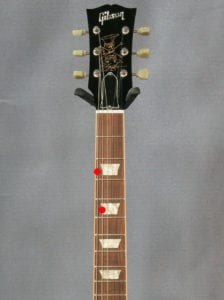Fifths are your friend. You’ve probably heard by now that there are 12 tones in the Western musical scale. It’s the kind of stuff we musicians talk about when civilians are out of earshot, so as not to divulge our secrets.
I kid; but at some point, you’ve probably become accustomed to the way that the notes line up on any instrument you’ve ever played:
1 – A
2 – A♯/B♭
3 – B
4 – C
5 – C♯/D♭
6 – D
7 – D♯/E♭
8 – E
9 – F
10 – F♯/G♭
11 – G
12 – G♯/A♭
The sharps (♯)/flats (♭) are the black keys on the piano keyboard, and the white keys are the whole tones (A, B, C, etc.). This is why the piano is a great instrument to write on: the notes are laid out in the simplest way possible, and color-coded. The relationship between any two notes in the scale is called an interval; and of all the intervals, the Fifth is the most revered, the most cherished, and the most employed. In fact, they call it:
The Perfect Fifth
It’s easy to count the distance between two notes. Your first note is 1. Let’s say that first note is a C, and you want to find its fifth. Count each letter in the musical alphabet, starting with your 1 (Just the letters; don’t count sharps or flats).
C – D – E – F – G
1 – 2 – 3 – 4 – 5
It’s even easier to find a perfect fifth on the neck of the guitar. If you’re playing a G-note on the third fret of your low E-string, its fifth (D) will always be two frets higher up the neck on the next string (the A-string, in this case).
Here’s what that shape looks like on the neck:
And it’s a movable shape, so a fifth will always look like this (except when you get over to the G and B-strings; but we’ll leave those out, for simplicity’s sake). So if you want to move it around, it’ll look like this:
The Circle of Fifths
The relationship between fifths is visually expressed in a cycle that loops back around to itself. This chart is known as The Circle of Fifths.
Moving clockwise, each note is a fifth above the note before it. To find the fifth of E, move one note clockwise: B.
Moving Around
Besides now being able to play a simple two-note version of any chord (rock and roll?), The Circle of Fifths makes it easy to modulate, or change keys. All major keys differ from their fifth by only one note. For example, the C-major scale consists of:
F – C – G – D – A – E – B
A fifth up from C-major, the G-major scale consists of:
F♯ – C – G – D – A – E – B
So when playing in the key of C-major, all you have to do to modulate to G-major is to introduce its one different note: F♯
This is called a pivot. Pivoting from one key into another is a cool maneuver, used to evoke emotion at a critical point in a song.
Why Are You Telling Me All This?
Becoming familiar with The Circle will help you change keys more fluidly. Changing keys is a great trick for writing interesting songs. Interesting songs are both entertaining and artistic. I want to see you succeed. I care about you, kid.



